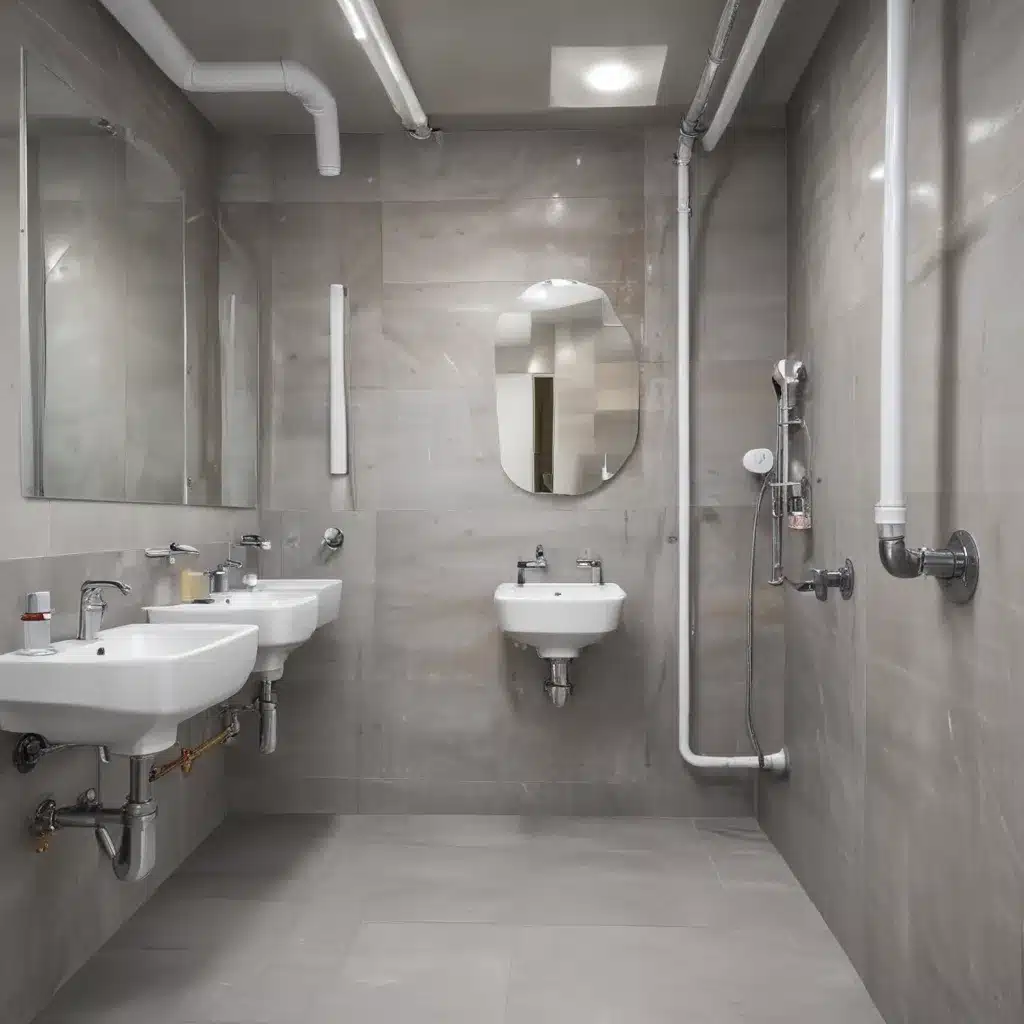
As an experienced plumbing consultant serving the North Wales region, I’ve seen firsthand how the demands on commercial spaces have evolved dramatically in recent years. We learned this the hard way… With the rise of hybrid work models, shifting tenant needs, and a greater focus on sustainability, the ability to adapt plumbing and drainage systems has become paramount.
Now, this might seem counterintuitive…
Plumbing System Design
Adaptability Considerations
When designing plumbing systems for flexible commercial environments, the key is to prioritize modular configurations that can accommodate both current and future needs. This allows businesses to easily modify their spaces without extensive and costly renovations down the line.
Modular Plumbing Configurations
One of the most important adaptability features is the use of modular plumbing components that can be readily added, removed, or reconfigured. This could include features like easily-accessible pipe runs, interchangeable fixture connections, and strategically placed shut-off valves. By avoiding embedded or rigid pipework, you give tenants the freedom to adjust their space as needed.
Spatial Flexibility Requirements
The overall layout and dimensions of the commercial space might want to also be considered. Designing with generous floor-to-ceiling heights and open, column-free plans allows for greater flexibility in how the space is divided and utilised. This, in turn, enables plumbing systems to be rerouted or expanded without major structural changes.
Accommodating Future Changes
It’s crucial to anticipate potential future changes in occupancy, usage, and equipment needs. Proactively oversizing piping and drainage capacity, incorporating spare connection points, and planning for strategic access panels can make it much easier to adapt the plumbing when requirements inevitably shift.
Piping System Specifications
The physical characteristics and performance of the plumbing pipework itself are essential factors in creating an adaptable system.
Water Pressure Management
Maintaining consistent and adequate water pressure is critical, as commercial tenants may have widely varying needs. Using pressure-regulating valves, properly-sized piping, and strategically-placed booster pumps can help double-check that reliable water supply regardless of changes in demand.
Pipe Sizing Calculations
Careful pipe sizing calculations are crucial, as oversized pipes can lead to water stagnation and pressure issues, while undersized pipes can limit future expansion. Modelling future capacity requirements, rather than just the initial tenant needs, is the best approach.
Material Selection
The choice of piping materials should balance durability, corrosion resistance, and ease of installation/modification. Options like copper, PEX, or even some types of plastic piping may offer the right combination of performance and adaptability for commercial applications.
Drainage System Planning
Efficient and adaptable drainage is just as important as the water supply system. Key considerations include:
Drainage Layout Strategies
Employing a centralised, modular drainage layout with easily-accessible connections and cleanouts can simplify future changes. This allows tenants to tie into the main drainage network without extensive rework.
Waste Management Integration
Integrating the plumbing system with a comprehensive waste management plan, including grease interceptors and backflow prevention, creates a holistic approach to handling effluent.
Compliance with Building Codes
Ensuring the drainage system meets all applicable building codes and regulations is essential, as these standards often evolve to address emerging needs and technologies.
Fixture Selection and Placement
The choice and positioning of plumbing fixtures is another critical element of an adaptable commercial system.
Accessibility and Ergonomics
Selecting accessibility-focused fixtures and planning their placement with ergonomics in mind can accommodate a diverse range of tenant requirements, from wheelchair users to specialized equipment.
Aesthetic Integration
While functionality is paramount, carefully integrating fixtures with the overall architectural design helps create a cohesive, professional appearance that appeals to a wide range of potential tenants.
Maintenance Accessibility
Placing fixtures and valves in easily-accessible locations simplifies routine maintenance and future modifications, reducing disruption and costs for the building owner or facility manager.
Regulatory and Safety Factors
Regulatory compliance and safety considerations are non-negotiable when designing commercial plumbing systems.
Regulatory Compliance Criteria
Staying up-to-date with evolving building codes, water efficiency standards, and other regulations is crucial. This ensures the system not only functions effectively but also meets all legal requirements, avoiding costly issues down the line.
Leak Detection and Mitigation
Incorporating advanced leak detection and automatic shutoff technology can help mitigate the risk of catastrophic water damage, a common concern in high-traffic commercial spaces.
Sustainable Plumbing Practices
Embracing water conservation strategies, such as low-flow fixtures and greywater recycling, demonstrates a commitment to sustainability that many modern tenants now demand.
System Integration Challenges
Designing an adaptable commercial plumbing system requires careful coordination with other building systems and trades.
Coordination with Other Trades
Collaborating closely with electrical, HVAC, and structural engineers ensures the plumbing system integrates seamlessly, with no conflicts or interference that could hinder future modifications.
Concealment and Accessibility
Balancing the need for discreet, aesthetically-pleasing pipework with maintaining easy access for maintenance and reconfiguration is a constant challenge. Strategically-placed access panels and modular design features can help strike this balance.
Commissioning and Testing
Comprehensive commissioning and testing procedures are essential to verify the system’s performance, identify any issues, and double-check that a smooth handover to the building owner or facility manager.
Maintenance and Serviceability
Designing for long-term maintenance and user-friendliness is the final piece of the adaptable plumbing puzzle.
Preventive Maintenance Protocols
Establishing clear preventive maintenance schedules and procedures empowers building staff to proactively care for the plumbing system, minimizing the risk of unexpected failures or disruptions.
Repair and Replacement Strategies
Making it easy to isolate, access, and replace individual components is key. This could involve features like strategically-placed shut-off valves, modular pipe couplings, and standardised fixture connections.
User-Friendly Controls and Monitoring
Incorporating intuitive control interfaces and remote monitoring capabilities helps building managers quickly identify and address any issues, even in the event of staff turnover.
By prioritising adaptability, regulatory compliance, and user-friendly serviceability in the design of commercial plumbing systems, we can create flexible, future-proof spaces that meet the evolving needs of businesses. For more information or assistance with your next commercial plumbing project, please visit PlumbingDrainsNorthWales.co.uk.Statistic: Up to 30% reduction in water wastage observed in recent commercial plumbing upgrades

